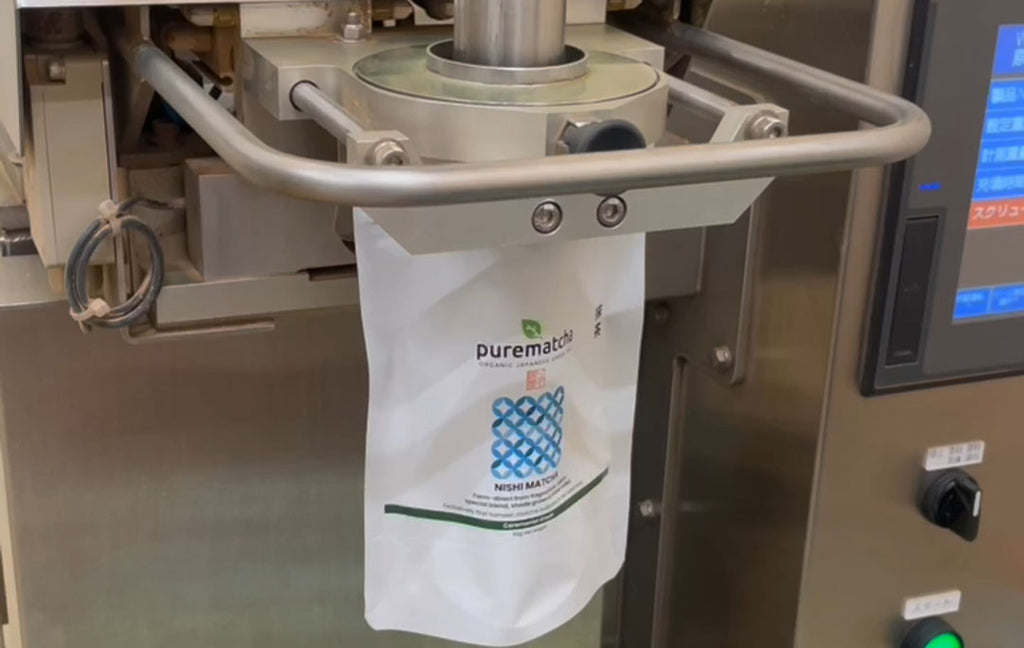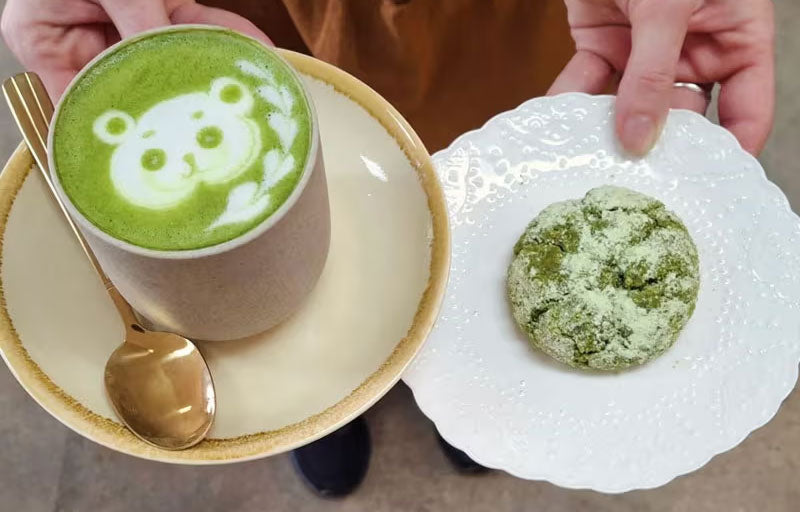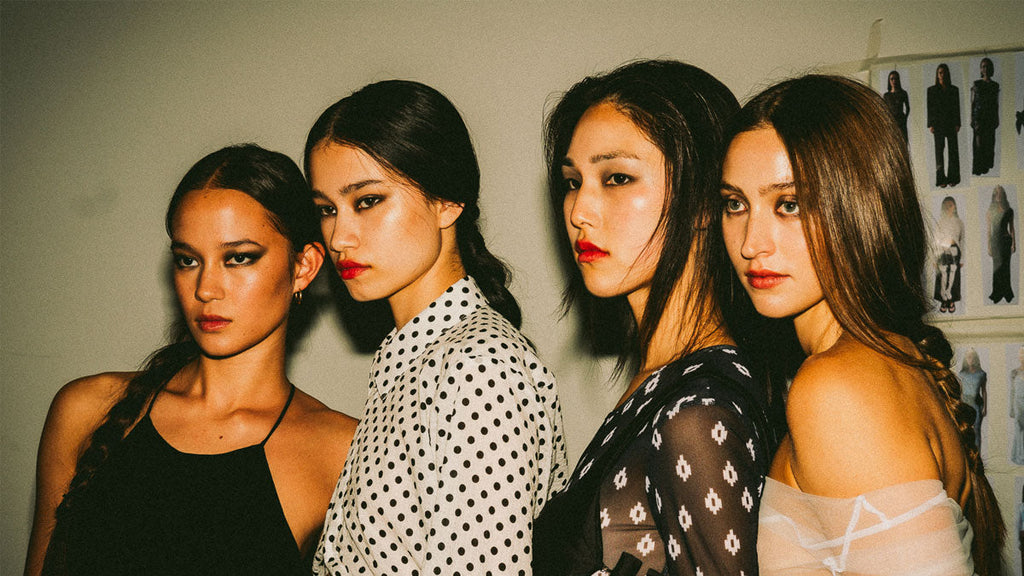What is Gyokuro Tea and How to Brew it
Gyokuro is a shade-grown loose leaf tea famous for its sweet and mellow taste.
In Japan, Gyokuro, is considered to be the most luxurious and therefore, expensive tea in the Japanese tea market. It is highly coveted among tea aficionados.
Hot tip: Unlike most green teas, Gyokuro benefits from cooler brewing temperatures (around 50°C - 60°C or 122°F - 140°F) to preserve its delicate flavour and umami notes.
Don't throw tea leaves out after your first brewing! Gyokuro leaves can be steeped multiple times, allowing you to enjoy several cups from a single serving. Experiment with slightly longer steeping times for subsequent infusions to unlock the full flavour profile.
The tea itself was discovered in 1835 by tea merchant Kahei Yamamoto VI. He found that covering the tea plants to protect them from frost and then rolling the leaves into small balls had a profound taste which he enjoyed when brewed.
He then began to sell the tea as "Bead of Dew" which today has become known as Gyokuro.
Is Gyokuro tea good for stress and anxiety?
Gyokuro is abundant with the amino acid L-Theanine. But what makes L-Theanine so special is that it has been shown to have many positive effects on humans.
L-Theanine is an amino acid responsible for increasing alpha brain wave activity, which promotes relaxation.
Any why is this important?
A study by Eschenauer and Sweet explains it:
It was concluded that “increased alpha activity in the brain induced by L-theanine has been associated with increased creativity, increased performance under stress, and improved learning and concentration as well as decreased anxiety.” [1] A 2001 study suggests that the combination of L-theanine and caffeine “improves the ability to multi-task and reduces task-induced fatigue,” [2] which is something we can all benefit from.
But can the caffeine in Gyokuro cause anxiety you may ask?
Well thanks to the calming effect of the L-Theanine, the overall effect of the caffeine is said to be gentler and more gradual than that of coffee.
So in effect you are getting the best of both worlds. The alertness from caffeine, supported by the calming prolonged effect of L-Theanine. Win win situation!
How much caffeine does Gyokuro have?
Like Matcha powder, Gyokuro is also high in caffeine.
This is because the Gyokuro tea leaves are shaded from the sun for 20 days with special made straw mats, which allow the caffeine levels to increase in the leaves, as well as allowing the amino acids to get stronger, producing a sweeter and stronger flavour.
What does Gyokuro tea taste like?
The main water-soluble components of Gyokuro are theanine (an amino acid), caffeine, tannin and vitamin C.
Theanine is the source of the tea’s flavour, caffeine the source of its bitterness, and tannin the source of its astringency.
Compared with Sencha, the shade-cultivated Gyokuro tends to be smoother, more full-bodied, and less astringent.
What are the health benefits of drinking Gyokuro tea?
The sweetness of the Gyokuro tea is one of the reasons why people love it so much. It has a rich, multi-layered flavour that is unlike any other kind of green tea
It has powerful antioxidants that can boost your immune system. This tea can also help speed up your metabolism, which is one of the reasons why lots of people use to add it to their diet plans.
Since it also hikes up your energy levels, it can be a great substitute for coffee, and one that does not stain your teeth or cause other issues, like coffee can do.
It can fight free radicals, meaning that it can help prevent disease. People who add it to their diets regularly have seen a decrease in their likelihood of developing diseases.
How do I brew Gyokuro tea?
The process of brewing Gyokuro is different to the process used for brewing other green teas.
Since it is a special type of tea, it is best brewed with the correct tea set.
Unlike other green teas, Gyokuro is best enjoyed at a lower water temperature level. So to enjoy Gyokuro at its fullest potential, you will need the following tea ware:
Tea ware
1. High quality Gyokuro loose leaf tea
2. Kyusu teapot with an inbuilt strainer.
3. Yuzamashi to rapidly cool the boiling water.
4. Yunomi tea cups
Gyokuro Brewing Instructions
1. Add 5-7 grams of Gyokuro loose leaf tea to a Kyusu teapot
2. In a kettle, bring water to a boil
3. Pour the boiling water into the Yuzamashi water cooling vessel. Let water cool down for approx 2 minutes or use a thermometer to ensure the water is approx 50-60 degrees celsius.
4. Transfer the water from the Yuzamashi into Kyusu.
5. Steep for 1 minute and 30 seconds and serve.
Hot tip - You can brew multiple infusions with Gyokuro due to the tea leaves being very high quality.
How to brew Gyokuro green tea in a clay teapot
This collection of Japanese tea pots are the perfect choices for brewing high quality Japanese green tea
How many times can I steep Gyokuro tea?
You can enjoy Gyokuro tea up to three times with the same tea leaves you used in the first brewing.
Just add 50 degrees water and let it seep for 60 sec before pouring the second brewing tea.
As for the third brew, keep the leaves and the same volume, but raise the temperature to 60 degrees and steep time to 120 seconds. Each time you will have a rich flavour full of umami goodness.
How do I store Gyokuro tea?
Store Gyokuro away from natural light. Keep the tea leaves fresh by keeping them in an airtight bag.
Use a purpose made air-tight tea canister which is not only useful for prolonging the life of your tea but will look exceptional on your kitchen shelf.
Washi paper wrapped tea canisters are perfect for keeping your tea leaves fresh and aromatic.
Can I eat Gyokuro leaves?
Once you finished re-steeping your tea, the tea leaves still have a lot of nutrients in them. Some of them, like for example vitamin E, aren’t water soluble so you’ll never obtain them just by steeping in hot water.
Transfer the spent Gyokuro tea leaves into a small dish and you can then splash some soy sauce or try a ponzo dipping sauce to really make the most out of your tea servings.








